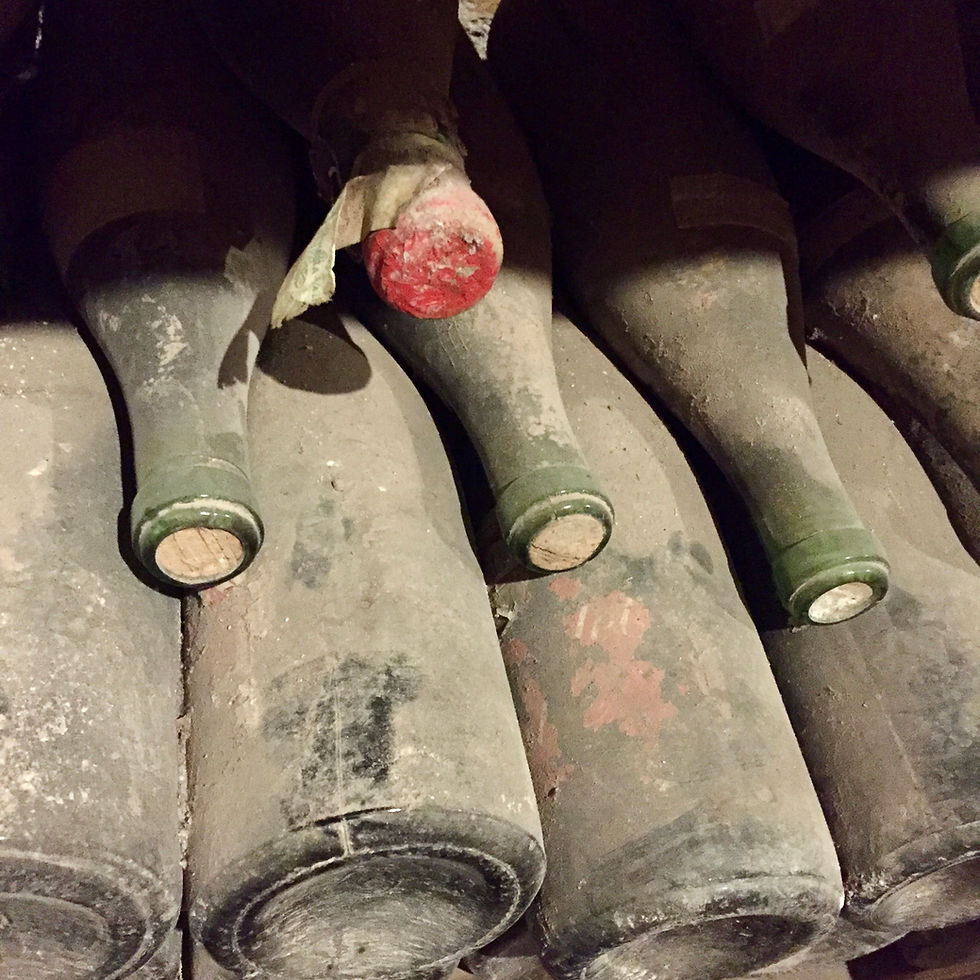Bruno Paillard's zero-dosage Champagne comes of age
- Joanna Simon

- Jul 3, 2019
- 3 min read

D : Z is one of two new launches for Champagne Bruno Paillard. The other is the 2009 Assemblage, a vintage that Alice Paillard admits isn't an obvious choice for a house that has built its reputation on elegance in an uncompromisingly dry style.
Making a non-dosage Champagne, i.e. without sugar added after disgorgement, is never easy. In fact, decades ago Bruno Paillard – the only man, incidentally, who has a Champagne house in his own name because he created it – experimented with non-dosage cuvées for a while and then abandoned the idea. But now he’s back with Dosage : Zéro, or D : Z, and very happy with it. Understandably so. It's balanced and complex, has a lovely chalky and creamy texture and none of the sharpness and grim austerity that has marred many a non-dosage Champagne over the years.
The flavours flow seamlessly – lemon flecked with orange, a hint of spice-cum-honey, crème fraiche, apple, salted biscuits, mouth-watering minerality and crystalline acidity. And it’s a Champagne that evolves attractively once opened. I drank it over three evenings, enjoying it as much on day three as I did on the first and second days. It has the depth and structure to go with food, although it's a perfect aperitif.

Alice Paillard – "not a fan of Chardonnay from the Montagne de Reims" – pictured at Hedonism Wines, London in June for the launch of the 2009 Assemblage
What has changed since Bruno Paillard was experimenting in the 1980s? A lot is the short answer. In the first place, an exceptionally high 50% of the blend is reserve wines, including vintages going back to 1985 in a solera system. Some were barrel-fermented initially, some were kept in barrel, some in tank, some for a decade in bottle. The blend is, unusually for BP, mainly Meunier supported by equal quantities of Chardonnay and Pinot Noir, and the grapes are mainly from the northern slopes of the Montagne de Reims, with some Meunier from the first part of the Marne Valley's right bank. (BP’s own 34 ha of vineyards, which it has built up since the 1980s across more than 100 plots, including 12 ha of Grands Crus, now supply it with almost 70% of the grapes for its entire output.) Most of the blend was vinified in small oak barrels. It was on its lees for more than three years before being disgorged in February 2018 then rested for six months. So, with its emphasis on Meunier, it's very different from BP’s other cuvées in composition, but stylistically falls in line with characteristic chalky, mineral purity.
£49.80, Hedonism Wines
"The challenge was to be loyal to the character of 2009, but to keep our style.”
The newly launched 2009 Assemblage is from a notably ripe Champagne vintage, a year in which a warm, dry August produced exceptionally ripe, healthy grapes and an early harvest. It’s not an obvious year for BP, especially as it’s a house that errs on the side of caution when it comes to declaring vintages. But Alice Paillard, co managing director with her father, and in London last month to show the 2009, said that the acidity in the grapes was in line with their last ten vintages, “but it was riper, with more maturity… The challenge was to be loyal to the character of the year, but to keep our style.”

Assemblage 2009's label design on the theme 'Invitation au Voyage' by Swedish artist Anna-Lisa Unkuri
Job done. The 2009 is ripe on the nose with peach, red berry and spice aromas – very Pinot Noir initially – but then the Chardonnay speaks with citrus and stony mineral notes. There’s a similar but extended progression on the palate: quite rich and creamy with sweet fruit to start, then intense candied citrus, citrus zest, chalkiness and vibrant acidity, then touches of spice and roast nuts, and finally a long, steely, citrus, saline and acid-bright finish. In sum: more exotic and therefore seemingly less mineral than usual, but sustained by typical energy and acidity.
Compositionally it’s half and half Pinot Noir, mainly from the Montagne de Reims, and Chardonnay from the middle and north of the Côtes des Blancs (Alice says she’s “not a fan of Chardonnay from the Montagne de Reims”). 20% was barrel fermented and it was 10 years in the cellars, seven of them on lees. It was disgorged in September 2017, had a dosage of 5g/l and was then rested for 18 months before release, the highest of recent years – perhaps surprisingly in view of the ripeness, but it was what they felt worked best. The label is by Swedish artist Anna-Lisa Unkuri to whom BP gave the theme ‘Invitation au Voyage’.
£68.80, Hedonism
Photographs by Joanna Simon





Comments